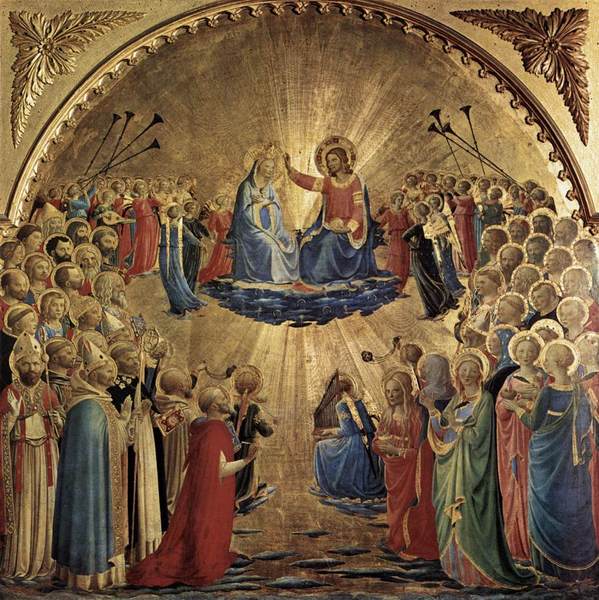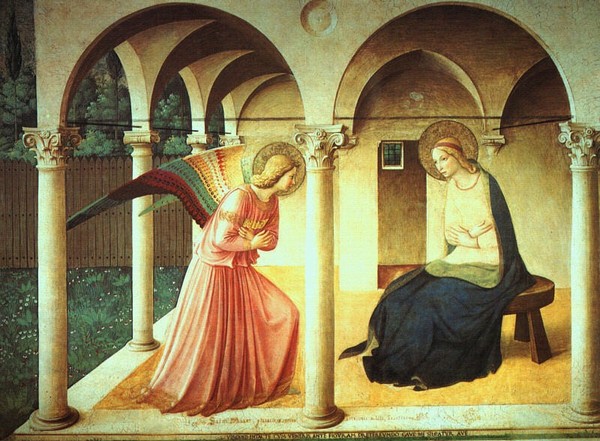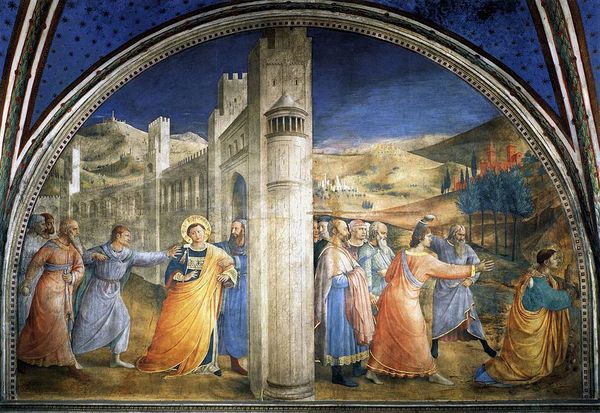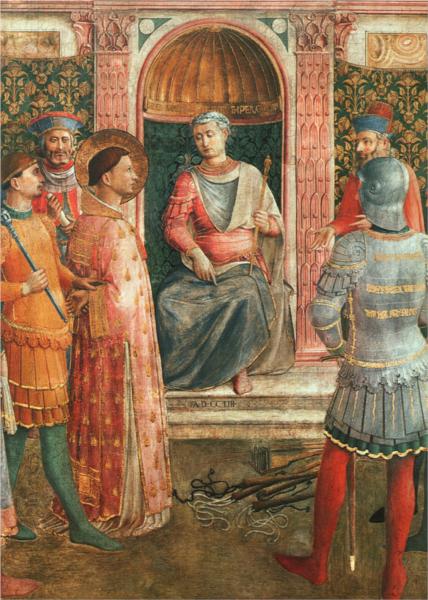Fra Angelico
Fra Angelico, born in 1387, and one of the pioneers in the field of Modern Painting, was a very saintly man. He devoted his art to the service of God alone, and like the early Christian Artists whose paintings we see in the Catacombs, worked with one object in mind - to lead the thoughts of his fellow man to their Creator. He never began a work until he had first dedicated it to God by prayer. When he painted the Sorrows of our Divine Saviour, his heart went out to Jesus and His Blessed Mother in deepest sympathy, and whenever he painted a crucifixion, tears streamed from his eyes.
Although this holy man occupied an earthly habitation, he lived apart from the world in a Heaven where he painted his celestial subjects, for his pictures possess a spiritual beauty not born of human associations.
Fra Angelico was a member of the Dominican Order, and his best work may be seen in the monastery of San Marco. This old building had not been occupied for a number of years, and was in a dilapidated condition when Cosimo de Medici, a liberal patron of the arts, decided to pay the expense of repairing it so that the Dominicans could occupy it for a home.
To Fra Angelico was entrusted the task of beautifying the cells of his brother Dominicans, and behind the doors of the old monastery the most beautiful paintings of the Blessed Angelico are hidden today. These paintings are unlike any produced by artists before or since his time. They have inspired many painters and will continue to inspire others as long as San Marco stands. The voice of the saintly Angelico is stilled, but through the medium of his paintings, this holy brother continues to preach his sermons to those who are privileged to view the works he has left behind him.
Among his best paintings outside of San Marco are The Coronation of the Virgin (The Louvre) and The Annunciation (Church of Cortona). In the chapel of Nicholas V. Vatican, the walls are covered by beautiful frescoes from the brush of Fra Angelico. They are in two series, the upper one represents scenes from the life of St. Stephen, the lower one from the life of St. Lawrence.

The Coronation of the Virgin, 1434
Fra Angelico (1395-1455)

The Annunciation, 1442
Fra Angelico (1395-1455)
St. Stephen
St. Stephen was one of the seventy two disciples of Jesus, and was chosen one of the seven deacons. His preaching produced wonderful results, but this did not please his enemies who seized the holy man and brought him before the Sanhedrin where they charged him with blasphemy against God and against Moses. St. Stephen bravely defended himself while he upbraided the accusers for their hypocrisy, and they being unable to justify themselves rushed upon their helpless victim, and dragging him into the country, stoned him to death.

The Stoning of Stephen, 1447
Fra Angelico (1395-1455)
St. Laurence
Before the martyrdom of St. Sixtus, St. Laurence was appointed by him to act as guardian of the treasures of the church and divided them among the poor, but armed with the authority of a Roman edict, which ordered all the property of the church confiscated, the prefect of Rome demanded that they be turned over to him.
St. Laurence refused to give up the treasures of the church to the prefect, but promised that at the end of three days he would show him the riches that would outshine all the wealth of the Roman Empire.
He then set about getting together all the poor and helpless in the city, and true to his promise presented them to the prefect saying, "see the treasures of the church."
He died after suffering the most excruciating tortures at the hands of the Romans, being burned to death over a slow fire.

St. Lawrence on Trial, 1448
Fra Angelico (1395-1455)
We now leave Fra Angelico to take up the work of Masaccio, the most progressive of early Christian Artists up to this time.
| Page 7 | Beginning of Book | Page 9 |